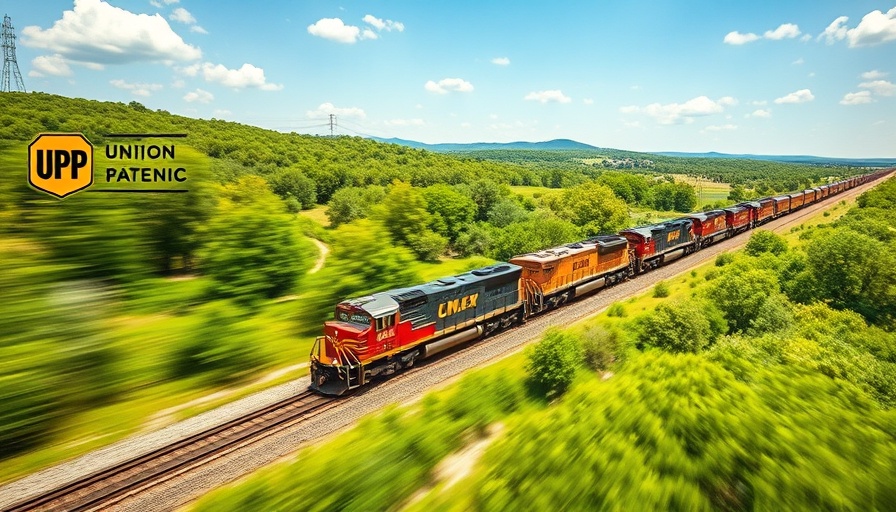
Why Rail Consolidation Matters to Your Veterinary Practice
The proposed merger between Union Pacific and Norfolk Southern has triggered alarm bells among various stakeholders, especially from the perspectives of rail customers and business owners, including those in the veterinary sector. A coalition of seven U.S. railroad customer associations is urging regulators to scrutinize this merger closely, as it poses risks that extend beyond just the rail industry. If approved, this deal could reshape shipping costs and logistics not just for the traditional railroad customers, but also for businesses that depend on reliable transportation of goods, including veterinary clinics.
The Risks of Reduced Competition
Senator Chuck Schumer's characterization of the merger as a "hostile takeover of America’s infrastructure" reflects growing concern over the impact of increased monopoly power in the railroad industry. If the merger proceeds, the combined entity is expected to command significant influence over pricing and service standards, potentially leading to higher costs for businesses that rely on these shipping options. As a veterinary clinic owner or manager, any increase in overheads could eat into your profitability and limit the resources available for better equipment or services.
Customer Voices: The Opposition to the Merger
As customer groups raise alarms about the planned merger, they express concerns such as increased prices and compromised service quality. This opposition underscores the value in supporting local economies and competitive practices that benefit consumers. Major railroad unions have also indicated their intention to fight against the merger, arguing it would threaten jobs and disrupt existing rail services. For veterinary businesses, stable and predictable logistics remain critical, especially in managing supply chains that directly affect service delivery to pet owners.
Understanding the Broader Economic Context
In the context of an $85 billion deal that promises to create the first coast-to-coast freight rail service in the U.S., understanding the implications is vital. With a combined enterprise value estimated at $250 billion, stakeholders should consider how such large entities could impact their individual practices. The potential $2.75 billion in annual synergies claimed by the companies may benefit shareholders but could simultaneously take a toll on everyday customers through increased costs and diminished service reliability. Each veterinary clinic must stay informed on such developments and advocate for competitive practices that support their needs.
Actionable Steps for Veterinary Clinics
As the debate intensifies over the Union Pacific and Norfolk Southern merger, veterinary service providers should consider reassessing their logistics strategies. Engaging with trade associations and advocacy groups can strengthen your position against monopolistic practices that threaten your bottom line. Additionally, seeking alternative supply routes and methodologies for transportation of essential veterinary supplies can mitigate risks associated with potential service disruptions.
Looking Ahead: Future Predictions for the Rail Industry
The outcome of this merger will likely dictate future trends in freight transportation, which will have cascading effects on various sectors, including veterinary services. Should regulators impose restrictions, they may create a balanced environment that favors smaller companies and less monopolistic behavior. Conversely, a lack of oversight could lead to a new era of consolidation that threatens small business viability. Staying engaged in these discussions and being proactive can help clinics safeguard their interests.
 Add Row
Add Row  Add
Add 




Write A Comment